- Administrator
- Albums and Singles
The greatest heavy metal story ever told—the complete tale of a life lived for metal. Part anthology, part memoir, and years in the making, METALION includes over 600 reproduction pages from every issue of Slayer Mag—Slayer 1 through Slayer XX, plus the precursor Live Wire zine—spanning from the early 1980s through 2010. In addition, author Jon Kristiansen recounts his life’s story, from alienated outsider to central figure in Norwegian black metal to metal party beast to world-weary metal survivor. The book also features over 100 rare photographs, including two color sections and a portrait gallery of photographs taken by Kristiansen himself.
For twenty-five years, Norway’s Slayer Mag published the gospel of black metal and death metal, combining eye-ripping graphics, brutally honest writing, and relentless offbeat humor. With this anthology/memoir, editor Jon “Metalion” Kristiansen unfolds the extreme highs and lows of a life lived for heavy metal. Founded in 1985 in Sarpsborg, Norway, Slayer Mag quickly rose to prominence by championing countless unsigned death metal pioneers. The pages of Slayer Mag exploded along with the extreme metal underground, and as black metal rose to prominence in Norway in the 1990s, Slayer Mag remained the final word on the moods and motivations of those dark times.
The astonishing combination of archival material includes scores of key historic interviews with the most revered figures in extreme metal, including Mayhem, Emperor, Slayer, Kreator, Nihilist, Celtic Frost, Bathory, Cathedral, Entombed, Morbid, Napalm Death, Metallica, Opeth, Cradle of Filth, Sadistik Execution, Usurper, Nifelheim, Darkthrone, Sodom, Destruction, Morbid Angel, Deicide, Exodus, Dissection, Candlemass, Carcass, Sepultura, Gorgoroth, Death, Watain, Sadus, Satyricon, Enslaved, Pentagram, Jarboe, Immortal, Possessed, Overkill, Ulver, Dark Angel, and countless others.
“From the start, I made Slayer Mag as honestly and as well as I could,” says Kristiansen. “I never knew any other way. I hope that I have produced something that will stand the test of time.”
“Presiding over the birth of extreme metal from its Scandinavian heartland, the first issue of the legendary Slayer fanzine was cranked out in 1985 and over the years shifted its coverage to provide an insider view of Swedish death metal and Norwegian black metal through their formative and most controversial years.”—Terrorizer
“For countless metalheads, the zine Slayer was a lifeline to a global scene. Founder Jon Kristiansen was deep into the scene in Norway, and is, to this day, one of the best primary sources for facts and stories about Mayhem, Varg, and what really happened back in the day.”—The Onion AV Club
More info here.

Read More
- Administrator
- Albums and Singles
 Dutch experimental label/store Staalplaat has a new series in collaboration with the Extrapool art space called Brombron. For the first installment they invited Robert Hampson (Main), David Howell and Alastair Leslie (who make up Antenna Farm) to spend some time together making strange sounds. The results are scattered here, but never dull. The five-track CD does not list song titles, but presents pictures of the final song waveforms taken from the mastering program used to finish this disc off, and that nicely sums up what the music is all about, too. There's little apparent direction here, mostly just collages of found sounds, digitally spliced together and packaged in a beautifully simple all paper sleeve that folds in on itself like the sources of the sounds the disc contains. It's nearly impossible to tell what is making the odd creaks and clicks and knocks here, but I can visualize the musicians walking about the art space, contact mics in hand, with the kind of giddy wonderment that a child who has first discovered a tape recorder might have. While the completed compositions are far from playful in tone, they do represent a kind of 'throw caution to the wind' sort of approach to realizing the acoustic properties of the discreet time spent together in a designated space. This may not hold the interest of old school Main fans who appreciated Hampson's song-based approach to deconstructing sound; there are no basslines or melodies or even songs here. This is like the equivalent of listening to the architechture of the Extrapool, and from the sound of it, it's a place worth a visit.
Dutch experimental label/store Staalplaat has a new series in collaboration with the Extrapool art space called Brombron. For the first installment they invited Robert Hampson (Main), David Howell and Alastair Leslie (who make up Antenna Farm) to spend some time together making strange sounds. The results are scattered here, but never dull. The five-track CD does not list song titles, but presents pictures of the final song waveforms taken from the mastering program used to finish this disc off, and that nicely sums up what the music is all about, too. There's little apparent direction here, mostly just collages of found sounds, digitally spliced together and packaged in a beautifully simple all paper sleeve that folds in on itself like the sources of the sounds the disc contains. It's nearly impossible to tell what is making the odd creaks and clicks and knocks here, but I can visualize the musicians walking about the art space, contact mics in hand, with the kind of giddy wonderment that a child who has first discovered a tape recorder might have. While the completed compositions are far from playful in tone, they do represent a kind of 'throw caution to the wind' sort of approach to realizing the acoustic properties of the discreet time spent together in a designated space. This may not hold the interest of old school Main fans who appreciated Hampson's song-based approach to deconstructing sound; there are no basslines or melodies or even songs here. This is like the equivalent of listening to the architechture of the Extrapool, and from the sound of it, it's a place worth a visit.Read More
- Administrator
- Albums and Singles
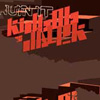 The pairing of Kid606 and Dälek isn't something that makes immediate sense to me on paper. 606 is known for most for his full throttle laptop cutups, glitchery and appropriation of hip hop as one of a myriad source files to be mashed into his digital melee. On the other hand, Dälek fuse experimental rock and electronics, but somehow grind out real hip hop without any sense of irony or 'look how cool this Missy Elliot sample sounds' tongue-in-cheek humor. However, the musical match-up works well on this EP from Tigerbeat6, further demonstrating that neither artist in the equation here is pinned down to a particular MO. Dälek's contributions from the straight-ahead rap on the Dälek remix to the thick drones of dirty sounds on the original mesh well with Kid606's short-attention span approach to songcraft. 606 seems to take the Dälek material seriously, and with the CD bonus track "Vague Recollection," there's even a reflective moment of pause that recalls equal amounts of the Kid's 'Soccer Girl EP' and Dälek's beat-less live ambiance. Kid606's own remixes of the "Ruin It" track provides the anticipated cut up beats, tiny noises, non-linear structure, and fractured groove that most of his beat-oriented work is like, but it takes the Dälek version to ground the song and really pull it back to earth with a simple head-nodding beat that thunders over the washed out noise beneath. The second CD bonus track, "Satan's Hard Drive," is a recording of Kid606's hard drive failing, a cacophany that almost anyone who's worked with digital audio for any length of time can appreciate, but a track that on its own, holds very little interest other than wonder at the failure of machines.
The pairing of Kid606 and Dälek isn't something that makes immediate sense to me on paper. 606 is known for most for his full throttle laptop cutups, glitchery and appropriation of hip hop as one of a myriad source files to be mashed into his digital melee. On the other hand, Dälek fuse experimental rock and electronics, but somehow grind out real hip hop without any sense of irony or 'look how cool this Missy Elliot sample sounds' tongue-in-cheek humor. However, the musical match-up works well on this EP from Tigerbeat6, further demonstrating that neither artist in the equation here is pinned down to a particular MO. Dälek's contributions from the straight-ahead rap on the Dälek remix to the thick drones of dirty sounds on the original mesh well with Kid606's short-attention span approach to songcraft. 606 seems to take the Dälek material seriously, and with the CD bonus track "Vague Recollection," there's even a reflective moment of pause that recalls equal amounts of the Kid's 'Soccer Girl EP' and Dälek's beat-less live ambiance. Kid606's own remixes of the "Ruin It" track provides the anticipated cut up beats, tiny noises, non-linear structure, and fractured groove that most of his beat-oriented work is like, but it takes the Dälek version to ground the song and really pull it back to earth with a simple head-nodding beat that thunders over the washed out noise beneath. The second CD bonus track, "Satan's Hard Drive," is a recording of Kid606's hard drive failing, a cacophany that almost anyone who's worked with digital audio for any length of time can appreciate, but a track that on its own, holds very little interest other than wonder at the failure of machines. Read More
- Administrator
- Albums and Singles
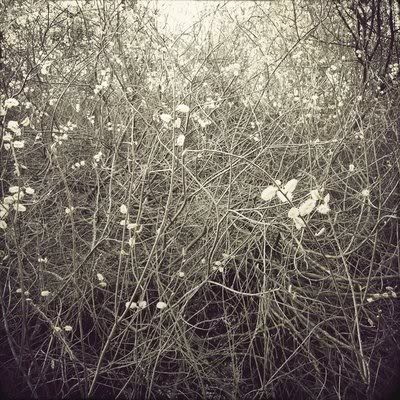
Available to order now: www.underthespire.co.uk
Artist:Steven Hess + Christopher McFall
Title: The Inescapable Fox
Cat#: Spire 043
Edition of 200 vinyl LP's.
“I think I speak for Steven and I both when I make mention of the fact that a great deal of the
materials used to create this release stemmed from a mutual interest in working with taped (analog)
recordings. So, when we began working together we started by sending analog recordings back and
forth by mail. Most of my recordings are done on treated tape, whereby the binder material is
subjected to hydrolysis prior to the recording phase. Steven recorded some of the more
sound/precussive elements for the inescapable fox on some of my tapes and his as well. He sent
them to me and I began editing the material from there. I’ve been working with piano, voice and
field recordings for some time now, so I tailored these source recordings specific to the tracks on the
release.
As far as ideologies are concerned, we approached the collaboration process thematically in order to
attempt to focus our work for this release. The initial concept for release centered around the
thoughts of the interface between light and dark (the specific mention relating to the collision of
these two absolutes). This notion of absolutes brought to a stage of possible compromise made me
think a bit about Greek mythology, specifically about Laelaps (the hound never failed to catch
whatever it was that he was hunting) and his rival the Teumessian fox that could never be caught.
‘The Inescapable Fox’ seemed to allow for a resolution of the two.
Steven Hess is a drummer and sound modifier presently located in Chicago, USA. He’s an active
member of Locrian, Ural Umbo, Cleared, Haptic, and On (w/Sylvain Chauveau), and has
collaborated with the likes of Christian Fennesz, Pan American, Stefan Németh (Radian), David
Daniell, and Robert Hampson to name a few.
Christopher McFall is an experimental composer/sound artist based in Kansas City, USA. His
primary interest involves the concept of arranging analog source audio to serve as a gateway for
experiencing visual environments, whereby the resulting recordings translate into soundtrack of
spaces specific to each listener. The methodology behind Christopher’s workings involves the use
of piano, phonograph, saxophone and field recordings captured on chemically treated/decaying
audio tape recordings that are then layered and further manipulated in a digital format.
- Chris McFall
Read More
- Administrator
- Albums and Singles
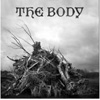 Compiling rare 7" and CDR tracks, this compilation is not for the meek. At nearly 80 minutes of shambling, broken guitar riffs and inhuman shrieks, fatigue sets in pretty quick. Taken in small doses, however, it’s the perfect thing to play when something needs to be loud and angry.
Compiling rare 7" and CDR tracks, this compilation is not for the meek. At nearly 80 minutes of shambling, broken guitar riffs and inhuman shrieks, fatigue sets in pretty quick. Taken in small doses, however, it’s the perfect thing to play when something needs to be loud and angry.
Trying to take this whole compilation in at once is about the same as trying to listen to Swans' Cop/Young God from beginning to end.It is an apt comparison, because both are these dissonant, hate-filled compositions that move along at such a slow pace, they almost feel frozen in place.With a tempo that matches that of much of Khanate's work, I don't think even the most dedicated fans could headbang to this.
This is exemplified on the opening "Always Waiting," a mix of pounding, sloppy riffs and raw, painfully shrieked vocals.It's got that fuck-all vibe of the best grindcore albums, but at the polar opposite pacing.The longer "Fails" is a bit more disciplined: even with its erratic rhythm section, the deep bassy blasts lead to a more structured feel, even if it's the perfect definition of "lurching."
There is a smattering of covers on here, most of which are impossible to link to their original.The cover of Body Count's "Cop Killer" is all dissonant big riffs and indecipherable shrieks; the only commonality between them is the machine gun/drum breakdown in the middle of the track.The cover of "Dead Cops," originally by MDC (sensing a theme here?) also slowly plods along.Somewhat reminiscent of the slower moments of Godflesh's debut EP, it comes together nicely with a great, treated drum sound later on.
While I'm not overly familiar with the original, the faster tempo of Crass' "Do They Owe Us A Living" indicates that they're at least closer together in approach, while the overdriven sound is so distorted it occasionally trails into noise territory.Similarly, the cover of Danzig's "Tired of Being Alive" keeps a bit of that strip club trashy blues sound from the original, even deconstructed to the barest caveman essentials.
With its occasionally questionable production quality and sheer brutality of its approach, this collection is best reserved for those moments when harsh, grating noise is warranted.It's a big, loud, violent blast that works quite well for what it is.Subtlety isn't an option here.
samples:
 
Read More
- Administrator
- Albums and Singles
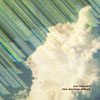 Following up 2009's Sever, this double LP follows a similar blueprint to that album, here spread across four long tracks. As a piece of sound art, each of these four pieces sound completely distinct from one another, but unified by Haynes’ simply wonderful use of tactile sonic textures that make his work so brilliant.
Following up 2009's Sever, this double LP follows a similar blueprint to that album, here spread across four long tracks. As a piece of sound art, each of these four pieces sound completely distinct from one another, but unified by Haynes’ simply wonderful use of tactile sonic textures that make his work so brilliant.
Each of these side-long pieces have different concepts and sources, but they work together.Linked through the use of various tape decay effects, contact mics, and field recordings, the finished project is a wonderfully cohesive suite of compositions.
"Ashes," originally part of a project to rescore two films, Jump Rope and Silent Snow, Secret Snow, appears with further work completed.A pastiche of deep, hollow ambience and crunchy, static-laden sounds, it is the most minimal of the pieces.It shifts into a decidedly darker realm with deep, harrowing passages of sound and bizarre, alien textures as it slithers to its conclusion.
Again working in sparser pastures, "Terminal," is sourced from a series of thermal vent and geyser recordings, resulting in a hiss-laden piece that somewhat resembles a cheap blank cassette played at maximum volumes.The distant geological rumbles and rattles make its pedigree clear, as does the white noise and rushing water that make the dying moments of the track some of the harshest on the record.
The two compositions on the second LP are noticeably different than those that precede it, focusing less on expansive ambience and more on carefully shaped and molded tones."Half-Life," for example, showcases Haynes' love of gurgling, tactile sounds, and they're paired with constant, shimmering tones that carefully oscillate between shrill and beautiful.
"Cold" once again utilizes the glistening tonal passages that "Half-Life" did, and makes them the centerpiece, resembling the hypnotic drones of the best Organum.With the occasional jarring outburst of shortwave radio static, it feels very dynamic, which becomes even more evident towards the end, where the sound is layered to a thick, gauzy cloud that demands attention without being too much.
Haynes' fondness for organic, breathing sonic textures that can be felt as easily as they can be heard is what initially attracted me to his work, and it's a trait that can be heard throughout The Decline Effect.His compositions reach beyond this, however, and the juxtaposition of expansive ambient drone on the first LP and the carefully shaped tones on the second solidify the brilliance here.The Decline Effect is of the best pieces of sound art this year, easily.
samples:
 
Read More
- Administrator
- Albums and Singles
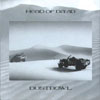 Easily their most well-known release, partially in part due to the Steve Albini production and Godflesh/Jesu's Justin Broadrick on drums, Dustbowl lives up to its legendary status, with the band perfecting the murky, hazy sound of LP. It’s rather unfair that the album is recognized just for those two individual's contributions, because the album as a whole is what is truly praise-worthy.
Easily their most well-known release, partially in part due to the Steve Albini production and Godflesh/Jesu's Justin Broadrick on drums, Dustbowl lives up to its legendary status, with the band perfecting the murky, hazy sound of LP. It’s rather unfair that the album is recognized just for those two individual's contributions, because the album as a whole is what is truly praise-worthy.
Mute/Blast First
The cover art and title are a great metaphor for the songs contained on Dustbowl.While LP was all black leather meth fueled motorcycle gangs, this is the sound of outlaw desert isolation.It is paranoia and sand, hallucinogens and violence.The references in "Tequila" to someone who has false papers and can "change your name, change your face" fits this ethos perfectly.
However, the album is as much Fistful of Dollars as it is Road Warrior:for all the post-apocalyptic dystopia there's a fair share of the American old west, presented through a distinctly post-industrial British filter.There's a mutant country twang to be heard on tracks like "108," and while it is buried in reverb and distortion, lyrics like "I'm gonna whip that stubborn horse" bring it to light.
Perhaps most well known on here, (due to Fear Factory's industrial metal cover) is "Dog Day Sunrise" which, like "Shadow Hills California" on LP, is one of the closest things the band ever came to pop in this era, but only in the sense that it is a catchy, earworm-type song.Fear Factory's version was adequate for what it was, but nothing touches the original.
The album is its weakest in a certain same-ness that pervades it.While on one hand it feels more conceptually and sonically cohesive than its predecessor did, it also feels like they took less chances.Again, this is a very minor critique that is the definition of nit-picking, but one I figured I should at least acknowledge.
It does, however, mix up the feel:while there might be a similar brown sonic palette of shrill guitars and distorted bass used throughout, the metallic pounding "Skin Drill" and "Bugged" convey a different vibe than the more dirgy, noise rock of "Cult of Coats" and "Adrenecide."It is not as drastic as the funeral drone of "White Bastard" and the thrash of "Snuff Rider MC," both appearing together on LP.
In the end, however, Dustbowl is the better album.While there are a few moments across the 14 tracks that aren’t as memorable as the taut, concise LP, the overall greater level of polish and songwriting that appear here push it ahead, just by a nose.Both albums are still, in my opinion, essential.
I should acknowledge that Steven Hess’ recent Facebook love for this album is what motivated me to revisit Dustbowl as well as LP.Having owned them for a number of years, it was great to pull them out again and hear them in their entirety.
samples:
 
Read More
- Administrator
- Albums and Singles
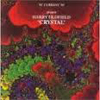 No matter what a person thinks of the music of Current 93, it must be recognized that David Tibet has always been a champion of other visionaries, whether they be in the realm of music, literature, or in the case of Harry Oldfield, science and invention. The "Current 93 present" series is just one example of Tibet’s gift as a curator. In this series of discs (now out-of-print) he brings to light and showcases talents who might not otherwise have received outside their own circles. While some have been more renowned, such as Shirley Collins and Tiny Tim, others like Sveinbjörn Beinteinsson, the Venerable 'Chi.med Rig. 'dzin Lama, Rinpoche and Harry Oldfield have received less notice. Oldfield’s work in the development and application of electro-crystal therapy is fascinating, and this musical artifact, created in accordance with his research is a wondrous, mutli-facedted specimen.
No matter what a person thinks of the music of Current 93, it must be recognized that David Tibet has always been a champion of other visionaries, whether they be in the realm of music, literature, or in the case of Harry Oldfield, science and invention. The "Current 93 present" series is just one example of Tibet’s gift as a curator. In this series of discs (now out-of-print) he brings to light and showcases talents who might not otherwise have received outside their own circles. While some have been more renowned, such as Shirley Collins and Tiny Tim, others like Sveinbjörn Beinteinsson, the Venerable 'Chi.med Rig. 'dzin Lama, Rinpoche and Harry Oldfield have received less notice. Oldfield’s work in the development and application of electro-crystal therapy is fascinating, and this musical artifact, created in accordance with his research is a wondrous, mutli-facedted specimen.
Tibet was first introduced to Oldfield's work by Hilmar Örn Hilmarsson (or HÖH who also mixed one of the most beautiful tracks on this release) while in Reykjavik, Iceland back in 1986. The work of Harry Oldfield is very wide ranging, but he is perhaps most well known for his pioneering work in developing non-invasive methods for the analysis and balancing of the human energy field. Chief among these methods is his innovative combination of electromagnetism with quartz crystals to create what he has called "Electro-Crystal Therapy". There is nothing New Age about this practice. Yes, his work has been on the fringe of science, but it has gained recognition in it's orthodox circles. After all crystals have been used for many advanced technologies including radio and computers to microphones, speakers, and lasers. That stimulating them with pulses of high frequency electricity could have a healing effect should come as no surprise. His therapy involves placing crystals in tubes containing a conductive electrolyte brine solution, and putting those tubes around certain points of the body. The tubes are then attached to an electromagnetic generator that administers electrical frequencies to the crystals. These frequencies, interacting with the crystals, then balance and normalize the human or animal energy system. Oldfield likens this process to receiving a "molecular massage."
A similar procedure has been used by Harry to record the crystal music on this disc. Different crystal specimens were used in varying combinations with two Electro-Crystal Therapy sound generator units. Special frequencies were then pulsed into them, and the sounds were recorded. Five of the songs on the disc were mixed out of the resultant recordings by Ken Thomas, and a sixth by HÖH, the other twelve tracks are strict examples of the recordings of the crystal combinations. However, nothing else has been mixed into these tracks. All a listener gets is the sound of crystals pulsed with electromagnetic energy. David Tibet and John Balance were both present when these recordings were made.
So what does it all sound like? Fans of high-pitched sine waves and crackling static will find much to love here. There isn't much going on in the low-end spectrum. Although some songs drone and some create a good backdrop for other activities or just spacing out to, it's not very ambient. These are the sounds of crystals singing. The mixed tracks are the easiest ones to listen to. My one issue with the album is that the unmixed tracks just containing the pure crystal recordings are interspersed with the tracks that are mixed in some manner, that latter having more song like qualities. I feel it would have been better if the six "songs" were first, and the twelve examples of straight up crystal recordings comprised the last section. But that is a minor complaint for such an innovative record.
On "One" it almost sounds as if the quartz is whistling. As if wind is rushing through some icy cavernous tunnel. "Three," also mixed by Ken Thomas, is very odd. Ascending and descending fractal spirals ripple in and out of each other. It sounds like some of these crystals have been run through the up-and-down pulse of a slow flanger or phase shifter. I don't know if they have been or not. I do know that my favorite track, "Energy Is Eternal Delight," mixed by HÖH, was treated with various rhythmic delays. In the liner notes he wrote that "no attempts were made to have the end results aesthetically pleasing" the main principal being to emphasize the character of the crystals being used, but this is the track that turned out to be the highlight of the album for me. That such a production would be the work of Hilmar is easy to believe. This song is what the Earth sounds like if a moment is taken to listen to it breathe. It starts off soft, slowly undulating, cycling through a passage, breathing in and breathing out, then the icy crystalline structures emerge. The song is an abstract architecture of natural lines, latticework, striated surfaces, and interior coagulations. I have returned to this album, and to this song in particular, over and over again throughout the years. It does for sound what a prism does for light.
The fact that crystals can be used as a musical source begs the question: Why aren’t more musicians using these techniques to create eerie, beautiful, mesmerizing, otherworldly music?
samples:
 
Read More
- Administrator
- Albums and Singles
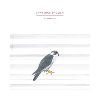 Lawrence English's latest release arrived at the perfect time for me, as I am in the throes of both a lengthy fascination with drone and a budding obsession with the New York Review of Book's masterfully curated publishing imprint.  The Peregrine is based on an "elegantly misanthropic" 1967 non-fiction work of the same title in which enigmatic writer/bird-watcher J.A. Baker becomes obsessed by a pair of falcons and stops identifying with humanity.  Befitting an album inspired by birds of prey, Lawrence's aesthetic here is considerably heavier and grittier than his characteristic pastoral ambiance.  In fact, this may be the first "difficult" Lawrence English album, but it is also a pretty stunning one.
Lawrence English's latest release arrived at the perfect time for me, as I am in the throes of both a lengthy fascination with drone and a budding obsession with the New York Review of Book's masterfully curated publishing imprint.  The Peregrine is based on an "elegantly misanthropic" 1967 non-fiction work of the same title in which enigmatic writer/bird-watcher J.A. Baker becomes obsessed by a pair of falcons and stops identifying with humanity.  Befitting an album inspired by birds of prey, Lawrence's aesthetic here is considerably heavier and grittier than his characteristic pastoral ambiance.  In fact, this may be the first "difficult" Lawrence English album, but it is also a pretty stunning one.
I have always been a fan of English's work, but his consistency is something of a mixed blessing.  He is reliably excellent and is undeniably one of the best choices for warm and immersive ambient drone, but that particular aesthetic has become pretty damn over-saturated in recent years.  Consequently, I am most interested in his departures from that comfort zone these days.  As far as such departures go, The Peregrine is an even more radical statement 2009's rather dark It's Up To Us To Live, as it is incredibly harsh and under-processed by Lawrence English standards.
Curiously, the base components of English's pleasantly shimmering sound beds remain mostly intact, but the atmosphere has been warped into something atypically stark, wintry, and forlorn (most conspicuously on the opening "The Hunting Life").Like a film director changing the whole complexion of a scene with a color filter, English has turned "pleasant" into "unsettling" with subtle dissonances, murkier fidelity, increased high-end sizzle, and unpolished edges (all enhanced, no doubt, by the vinyl medium). The effect is surprisingly dramatic and weirdly "punk"–I imagine this is how Lawrence would sound if he showed up at a basement party with only a synth and a mixer and blasted out a set through a couple of Marshall stacks.
My favorite two pieces are probably "The Roar Ceasing" and "Heavy Breath of Silence," but they only stand out from the rest of album because they both feature extremely low bass note progressions beneath their cold and bleak synth washes, making them feel a bit more melodic and kinetic than the surrounding material.  My ears might just be happy to have a very minor respite from the unforgiving small-scale existential horror of the rest of the album though.  Also, focusing on specific songs here is a fool's game: The Peregrine feels very much like an epic suite rather than a collection of individual pieces, so the arc and cumulative power is far more significant than the individual sections.
This is a very daring, minimal, and striking effort and I find myself increasingly marveling at its very existence.  I did not think English was capable of something so arctic, naked, and unrepentantly prickly.  He blindsided me here.  As a pre-existing fan, I love this album precisely because of that–English jettisoned almost everything that I enjoy and associate with him (tranquil beauty, crystalline production, amniotic warmth, etc.) and still managed to turn out something deeper, more successful, and more visceral that I ever would have expected.  Anyone new to Lawrence should probably dip their toes into something like Kiri No Oto or A Colour For Autumn before taking a chance on this more dark and primal side of his art, but this is definitely a significant peak in his oeuvre and a resounding artistic success.
Samples:
 
 
Read More
- Administrator
- Albums and Singles
 This performance was commissioned for 2009's A Thing About Machines festival, an event devoted to the theme "Spaces Speak."  Such a theme is right up Janek's alley, as he has long been interested in the role that architecture plays in the listening experience.  He is also fascinated by the fact that we are constantly immersed in a sea of unnoticed waves and transmissions, so he artfully combined them by transmitting some components of the piece to radios distributed to audience members throughout the concert hall.  In album form, sadly, Janek's clever spatial and acoustic manipulations are unavoidably lost, but Phoenix & Phaedra is still an enjoyably warm and crackling soundscape by one of the world's finest sound artists.
This performance was commissioned for 2009's A Thing About Machines festival, an event devoted to the theme "Spaces Speak."  Such a theme is right up Janek's alley, as he has long been interested in the role that architecture plays in the listening experience.  He is also fascinated by the fact that we are constantly immersed in a sea of unnoticed waves and transmissions, so he artfully combined them by transmitting some components of the piece to radios distributed to audience members throughout the concert hall.  In album form, sadly, Janek's clever spatial and acoustic manipulations are unavoidably lost, but Phoenix & Phaedra is still an enjoyably warm and crackling soundscape by one of the world's finest sound artists.
Despite the fact that this is a live performance commissioned to meet specific conceptual criteria, Phoenix & Phaedra Holding Patterns is very much a serious musical composition (rather than a mere installation or performance experiment) and a major work in Schaefer's discography.  In fact, he wrote it to celebrate the birth of his son (Phoenix).  Unfortunately, I have no idea how Phaedra fits into Janek's vision, as her story involves false accusations of rape, sea monsters, and suicides, none of which seem to occur here.  Instead, the six pieces here are largely based on decidedly less lurid Shruti box drones.  Schaefer is far too idiosyncratic to make a conventional drone album though, especially since much of his notoriety stems from innovative use of found sound and his singular talent for modifying record players.  Given that, it is no surprise that this material is pleasingly varied and unpredictable, but it is pretty astonishing how "musical" Schaefer is able to be without much in the way of "real" instrumentation.  I imagine it is not easy to construct a coherent, engrossing, and constantly shifting hour of music with some records, some field recordings of birds and machinery, and a box that makes a drone (used far more sparingly than I would expect).
The strongest and most immediately gratifying moments come when Janek makes unexpected textural or melodic detours, such as the "dying music box in a wind storm" interlude in the brief "Eyrie of the Phoenix."  More importantly, however, there is a very exacting mind dictating the ebb and flow of all the various sounds, so this isn't a drone album with some unexpected elements so much as an absorbing, surreal, and oft emotionally resonant aural narrative.  Happily, Schaefer usually displays a great deal of tact and nuance too, eschewing conventional build-ups and climaxes in favor of oases of blissful shimmering nirvana ("Red Plumes," for example) linked by enigmatic passages of collaged field recordings.  The overall experience is akin to a good story elusively unfolding as a series of fragmented impressions.
The only minor issues that I have with this album are that some of the Shruti box-centric passages are not uniquely Janek Schaefer-esque and that it is slightly more successful as an artistic statement than as a piece of music.  The music is certainly quite good, but a large part of my enjoyment stemmed from an intellectual appreciation for Janek's high-wire act of weaving a complex and compelling tapestry of disparate threads together without ever using density as a crutch.  Schaefer's mastery of his craft is impressive–it is very rare to hear abstract music that is this deliberate, uncluttered, and clear.   I definitely wish I had caught the actual event, but this makes for a very rewarding consolation prize.
Samples:
 
Read More
- Administrator
- Albums and Singles
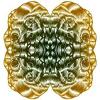
Prior to hearing Golden Retriever, the idea of a bass clarinet/modular synthesizer duo would have seemed uniquely terrible to me.  That initial prejudice was not entirely wrong, as Jonathan Sielaff and Matt Carlson can be a rather tough ride during their wilder improvisations, but this 2010 release is pretty spectacular and faultless.  As improbable as such a thing may seem, Golden Retriever have found the magic place where Tangerine Dream, impressionist classical, and free jazz influences can all seamlessly coexist and cohere into something wonderful and new.
Jonathan Sielaff and Matt Carlson crossed paths many times before the formation of Golden Retriever, as they are both very active in Portland, Oregon's thriving improv scene and have played together in a number of different incarnations, the most notable of which is probably Parenthetical Girls.  At some point, they realized that their solo projects were both heading in much the same direction and decided to join forces.  That shared background is enormously important, as both musicians prove themselves to be skilled improvisors and interact with each other quite comfortably and inventively, creating incredibly dense and shifting dronescapes without ever encroaching on each other's space.
Equally noteworthy, of course, is the unique instrumentation. Synthesizers, in general, aren't especially rare, but modular synths are fairly unusual in contexts this melodic.  Aside from providing Matt Carlson with a very "vintage space music" sound (with some able assistance from an Echoplex), his heavily customized set-up also enables him to vibrantly tweak and warp sounds and wave shapes as much as his heart desires. As for Sielaff, I can't think of anyone else that plays a contact-mic'd bass clarinet through an arsenal of pedals.  It's a bizarrely attention-grabbing and complimentary combination of textures.
The bulk of this five-song release is very drone-centric, but it is a much more fluid and melodic strain of drone than most: once Matt and Jonathan have a sufficiently dense bed of loops beneath them, they are both free (and eager) to color and shape the piece's progression with their improvisations.  Sielaff and his clarinet generally take the melodic foreground and he turns out to be a pretty amazing soloist, languidly unfolding surprisingly dark and poignant melodies over Carlson's thick buzzing and burbling.  I don't think this could work at all if anyone in Golden Retriever was less than an amazing musician, as such a template could be extremely limiting and tiresome in less capable hands.  However, Matt and Jonathan both seem to have incredible intuitive understandings of dynamics, harmonies, tension, and pacing: pieces intelligently ebb and flow, queasy dissonances form and dissipate, darkly throbbing arpeggios create a feeling of motion and urgency...these guys don't miss a single trick.  The worst thing that I can possibly say about this is that 42 minutes is a bit overwhelming.  While a few songs stand out as a bit better than the rest ("False Entry" and "Canonic Horizon"), this is basically a singular and virtuosic tour de force from the first note to the last.
Samples:
 
 
Read More

